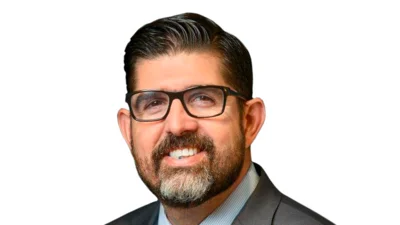MOCA Jacksonville announces a new exhibition “Don’t Blame it on ZEN: The Way of John Cage & Friends.” This interactive and multidisciplinary exhibition explores the enduring legacy of John Cage through works by Cage himself, as well as artists that worked with him, and his contemporary relevance through the works by younger artists who in different ways have been inspired by John Cage’s unique methodology. The exhibition is on view at MOCA Jacksonville through May 7, 2023.
Don’t Blame it on ZEN: The Way of John Cage & Friends traces the work and legacy of 20th-century composer and artist John Cage and explores his unique approach to art making that continues to live on in the work of artists today. The interactive exhibition will feature works by John Cage, Maria Chavez, Philip Corner, Andrew Deutsch, Ann Hamilton, Christian Marclay, Aki Onda, Yoko Ono, Nam June Paik, Matana Roberts, Robert Rauschenberg, and others.
Curated by Jade Dellinger, Director of the Bob Rauschenberg Gallery at FSW, and organized in collaboration with the Black Mountain College Museum + Art Center, Asheville, NC, where the exhibition was first presented in September 2021.
About the Exhibition
A leading voice of the post-war avant-garde, John Cage (1912-1992) was a composer, philosopher, poet, visual artist, amateur mycologist, and longtime Buddhist practitioner, whose enormous influence throughout the arts cannot be overstated. This interactive and multidisciplinary exhibition explores Cage’s work and legacy, featuring works by artists that both knew and worked with him, as well as younger artists who in different ways have followed his footsteps, such as Maria Chavez, Philip Corner, Andrew Deutsch, Ann Hamilton, Christian Marclay, Yoko Ono, Nam June Paik, and Robert Rauschenberg, among many others.
Widely revered as an innovator in the non-standard use and “preparation” of musical instruments, indeterminacy, chance-based, and electroacoustic music, John Cage was perhaps both the most provocative and the most influential American composer of the 20th century. His ideas would spread well beyond the music field however. In John Cage’s approach to composition, whether in performance or the visual arts, the role of the artist was not to dictate the outcome of a work, but to give space for the influence of chance.
John Cage encountered Zen Buddhism in the early 1950s, through the works of Aldous Huxley and the lectures and writings of Japanese American Buddhist monk Daisetsu Teitarō Suzuki. He taught at Black Mountain College in the summers of 1948 and 1952 and was in residence there during the summer of 1953. While at BMC, he organized what has been credited as the first-ever “Happening”, Theater Piece No. 1 (1952), that put to use many of Cage’s ideas of chance and indeterminacy. The interdisciplinary, multi-layered, performance event took place in BCM’s communal dining hall with Cage lecturing on music and reading from the ninth-century Chinese Buddhist classic Huang-Po Doctrine of Universal Mind, while now legendary participants, including artists Robert Rauschenberg, composer David Tudor, poets Charles Olson and M.C. Richards, and the choreographer/dancer (and Cage’s lifelong partner) Merce Cunningham, performed independently. These “Happenings,” that abandoned the traditional concept of stage-audience, and occur without a sense of definite duration, would become commonplace in the development of contemporary art in the following decades.
For more information about the exhibition, hours, and admission, visit https://mocajacksonville.unf.edu/.
Original source can be found here.





 Alerts Sign-up
Alerts Sign-up